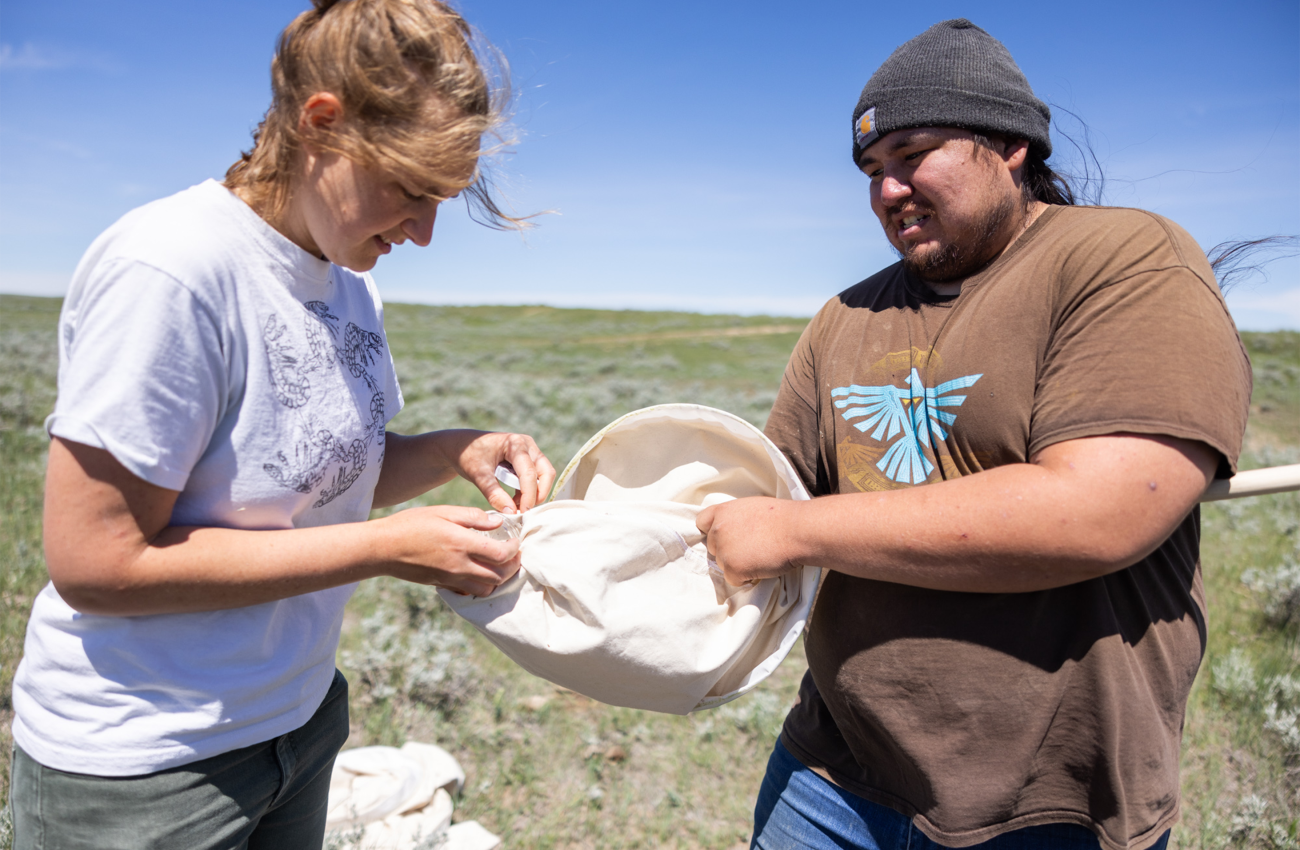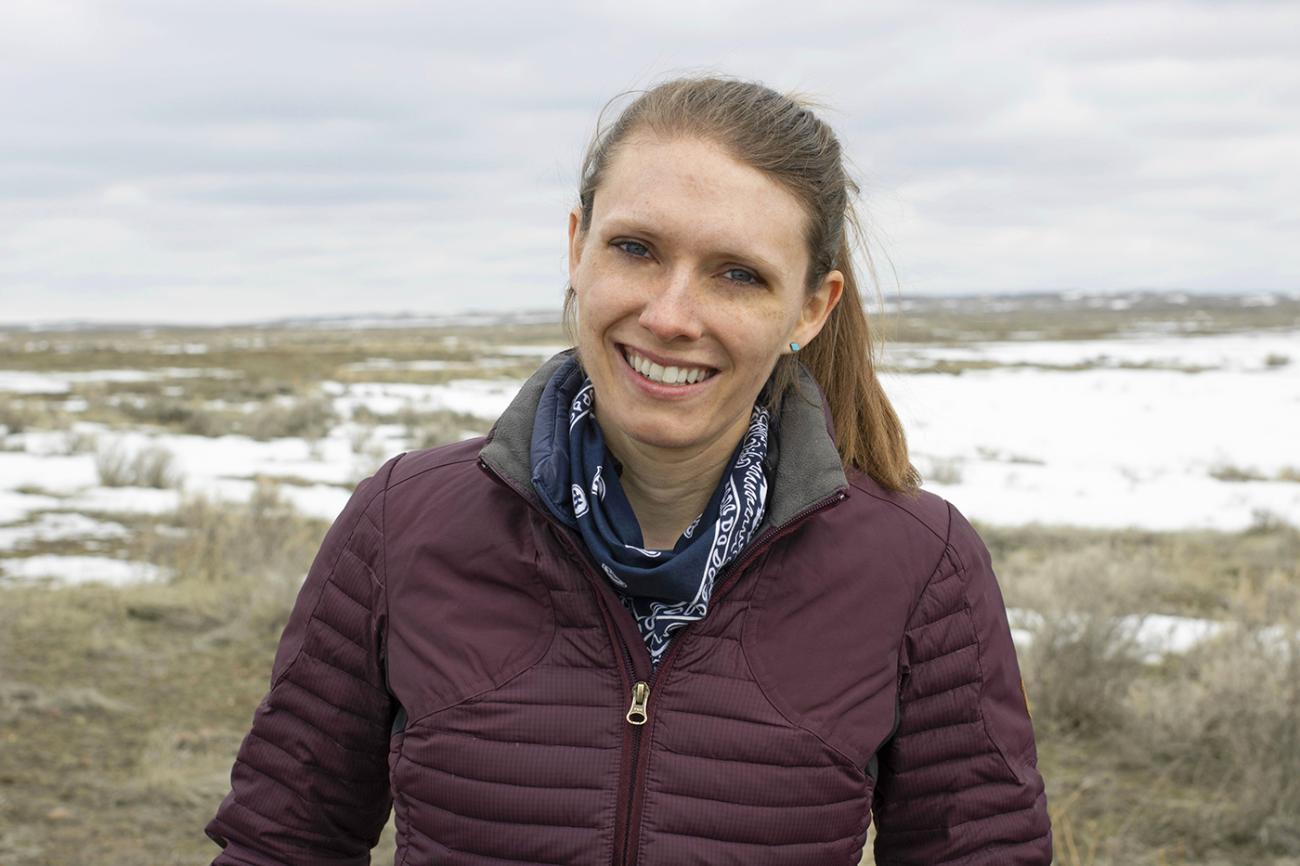Meet the Great Plains Science Team
We are a team of experts from diverse backgrounds who are dedicated to our program’s mission of conserving grassland ecosystems.

Dr. Andy Boyce, Avian Ecologist
Andy plays a key role in studying and protecting the hundreds of bird species that occur in grassland ecosystems. He researches the factors that affect threatened and imperiled species, examines restoration efforts, and works to better understand the effects of keystone species on local bird populations and their surroundings. His work informs the team's efforts to develop conservation strategies that encompass land management, species preservation and overall ecosystem resilience.

Dr. Ellen Welti, Community Ecologist
Ellen is a community ecologist with expertise in entomology. Her research focuses on plants,
insects, and species interactions, the glue that holds ecosystems together. In rangeland systems, she studies the effects of mammal communities, grazing regimes, and management on ecological communites. Ellen also researches responses to alternations to biogeochemcial
cycles, a hallmark of the Anthropocene.
Olivia Cosby, Place-based Conservation Expert
Olivia plays a central role in demonstrating the importance of community-driven approaches towards safeguarding ecosystems and biodiversity. By fostering partnerships with local communities, Olivia works to develop conservation efforts that benefit both natural regions and the people who live in them.
Jesse Boulerice, Species Reintroduction Specialist
Jesse guides the program's species reintroduction efforts and develops strategies that help restore and rewild grassland ecosystems. Through his work, he navigates a delicate balance of ecology, science, technology, politics and policy to ensure the long-term survival of species reintroduced to the landscape.
Jessica Alexander, Wildlife Biologist
Jessica leads the long-term monitoring surveys across five bison restoration programs. The work is part of a regional, tribally-led research network that ties bison restoration programs with students from local colleges, with the goal of providing high-quality educational opportunities and training for the next generation of conservationists and scientists.

Colleen Matzke, Advancement Program Specialist
Colleen works with individuals and organizations to provide sustainable funding for the Great Plains Science Program. Her contributions ensure the program can continue to deliver cutting-edge research on grassland ecosystems, support the conservation of grassland biodiversity and train the next generation of scientists.
Research Fellows
Calla Sopko, Montana State University
Area of focus: Insect and plant responses to grasshopper suppression programs
Ashley Skartved, Montana State University
Area of focus: Effects of bison grazing a wallowing on prairie plant communities
Emma Greenlee, Kansas State University
Area of focus: Investigating ground-nesting bee habitat in prairies under varied grazing and burning management
Andrew Dreelin, University of Northern Illinois
Area of focus: Demographic effects of prairie-dogs on nesting grassland birds
Nancy Raginski, University of Georgia
Area of focus: Understanding the migratory ecology and demography of grassland songbirds with the Motus animal tracking system
Anna Kurtin, University of Montana
Area of focus: Evaluating ARUs as a tool for rare and cryptic species monitoring
Ashlyn Herron, University of North Dakota
Area of focus: Using ARUs to evaluate the impacts of voluntary restoration on grassland songbirds
Maya Rayle
Area of focus: Evaluating how diverse riparian restoration strategies impact biodiversity, productivity and climate resilience in temperate grasslands
Claire Bresnan, Montana State University
Area of focus: Investigating the mechanisms of collective movement in Plains bison
Itai Namir, Montana State University
Area of focus: The Impacts of plague mitigation on the black-tailed prairie dogs in north-central Montana
Dana Nelson, Clemson University
Area of focus: Factors influencing swift fox reintroduction success to Fort Belknap Reservation, Mont.
Johnny Stutzman, University of Wyoming
Area of focus: The functionality of riparian corridors in prairie ecosystems
Kimberly Todd, George Mason University
Area of focus: Translocating swift foxes: Insights on personality, stress, and success
